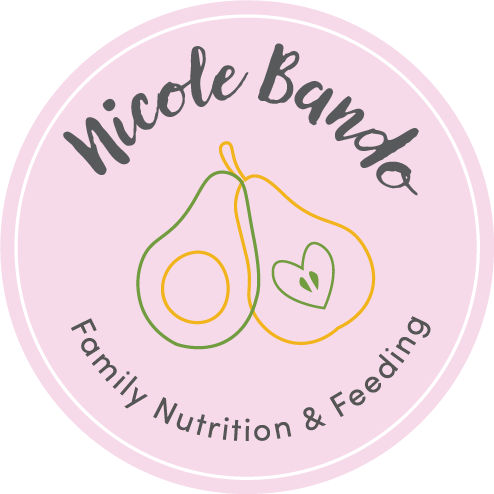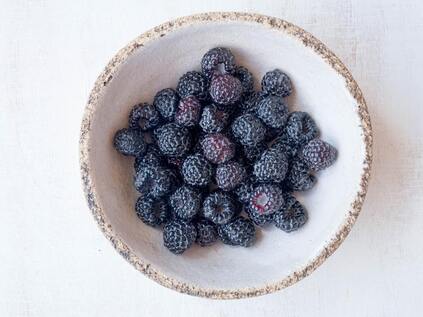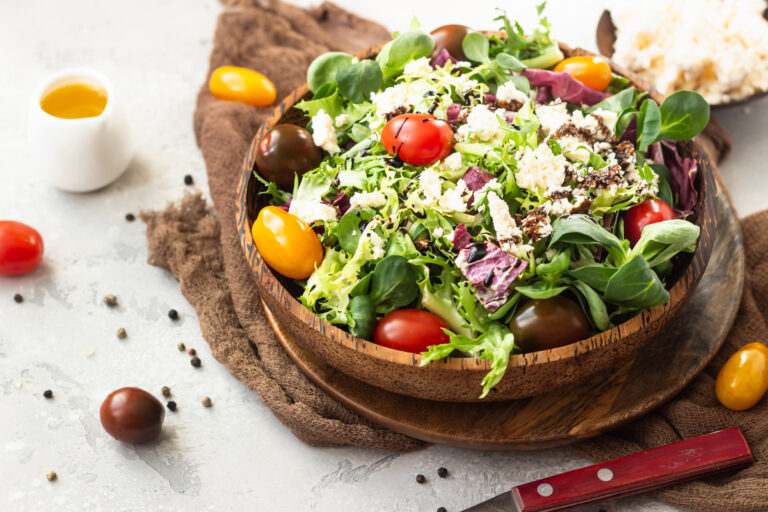Include enough calcium for bone health:
Calcium is integral for strong bones and women between the ages of 19 and 50 need 2.5 serves of calcium-rich foods per day, to reduce risk of osteoporosis or weakened bones. Women over 50 need an additional serve, due to the drop in oestrogen reduces the amount of calcium in the bones.
One serve of calcium is equal to 250mls of dairy or a plant-based milk with at least 100mg/100mls of added calcium, 2 pieces of cheese or 200g of yoghurt. Other sources of calcium include almonds, sesame seeds, tofu, green leafy vegetables, and fish such as sardines or salmon, though large quantities of these foods are needed to meet calcium needs. For example, 100g or 5 tablespoons of almonds is equivalent to the amount of calcium in a glass of milk. Some women may benefit from a calcium supplement, but it is best to seek medical advice.
Top tips:
- Include calcium-rich foods 3 times per day to meet your needs
- check your plant-based milk to ensure it is fortified with calcium
- Consider adding unsweetened Greek yoghurt with berries as a mid-afternoon snack
- Try sardines on toast for lunch.
Iron-rich foods & protein:
Iron carries oxygen around the body, so deficiency can lead to symptoms such as tiredness, headaches, and dizziness. A serve is equal to a palm-sized amount of an animal-based iron-rich source, like red meat, fish, chicken, pork, and eggs, or 2 palms of a plant-based iron sources include legumes, nuts, seeds, tofu, green leafy vegetables & wholegrains, such as oats and brown rice. Include these foods a few times a day will deliver your needs. Pair plant-based iron with Vitamin C, such as nuts and berries or tofu with broccoli and capsicum, to assist absorption. Women who are pregnant, vegan, vegetarian or experiencing heavy periods are at greater risk of deficiency and should seek the advice of their GP.
An example is: rolled oats with low fat milk, chia seeds & berries for breakfast, a wholegrain sandwich with lean chicken, cheese and salad for lunch & a lentil curry with brown rice for dinner.
These same foods are rich in protein, which helps to build and sustain muscle mass as we age. It also helps with feelings of fullness and appetite regulation.
Add colour:
As we age, our energy budget reduces, this is dependent on many factors such as activity levels and the amount of muscle. It’s important to eat nutritively, which means make your food count and work for you.
Aim to include half a plate of vegetables at lunch and dinner.
Simple tips to boost vegetable intake are:
- Add a couple of handfuls of spinach and some cherry tomatoes to morning eggs on toast
- Include a snack of chopped vegetable sticks with hummus
- Make a big tray of colourful roast veg, such as beetroot, pumpkin, sweet potato, zucchini and brussels sprouts to use in your lunches over the week, by adding protein.
There is a lot of confusing information about nutrition. Coming back to basics can help you to make healthful decisions. See how you go with these practical tips, 1-2 small changes make a big difference, and be in touch if I can help further.
Summary of top nutrition tips:
Calcium
- Include calcium-rich foods 3 times per day
- check your plant-based milk to ensure it is fortified with calcium (at least 100mg/100mls)
- Try unsweetened Greek yoghurt with berries as a mid-afternoon snack
- Sardines on toast with spinach and dill.
Iron & protein:
- Include a palm-sized amount of red meat, fish, chicken, pork, and eggs, or 2 palms of legumes, nuts, seeds, tofu, green leafy vegetables & wholegrains, such as oats and brown rice 3 times per day.
- Pair plant-based iron with Vitamin C, such as nuts and berries or tofu with broccoli and capsicum, to assist absorption.
- An example is: rolled oats with low fat milk, chia seeds & berries for breakfast, a wholegrain sandwich with lean chicken, cheese and salad for lunch & a lentil curry with brown rice for dinner.
Add colour:
- Add handfuls of spinach and some cherry tomatoes to morning eggs on toast
- Include a snack of chopped vegetable sticks with hummus
- Make a big tray of colourful roast veg, such as beetroot, pumpkin, sweet potato, zucchini and brussels sprouts to use in your lunches over the week, simply add some protein.


